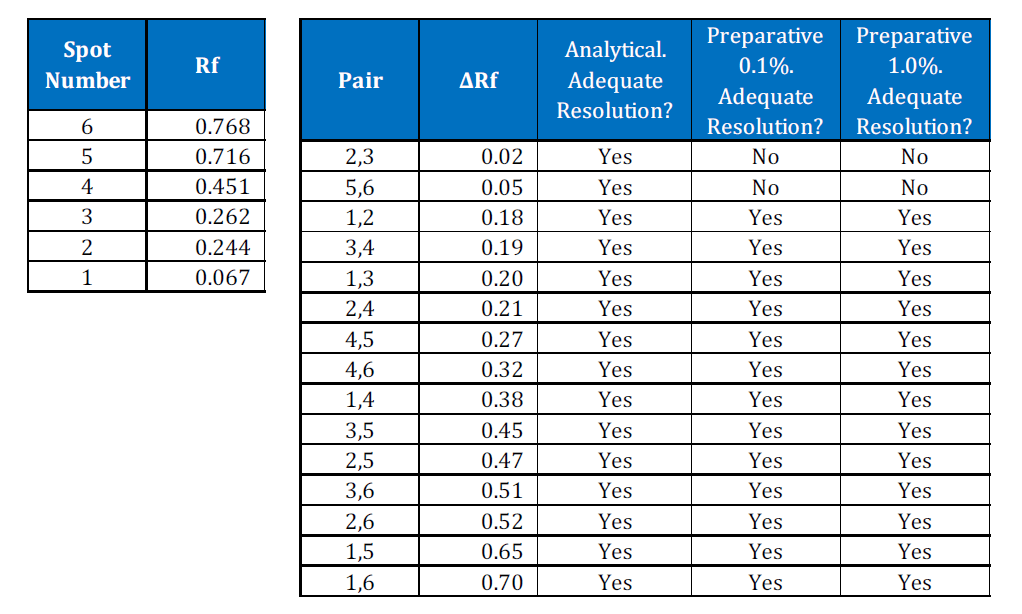By Dr. Robert Kerr
OBJECTIVE: To demonstrate how much material can be loaded on a Preparative Thin Layer Chromatographic Plate.
Questions
- How much adsorbent is on the plate?
- How much adsorbent is actually used in the separation?
- What is the resolution of your substances on Analytical TLC?
- What will be the plate number and resolution of your substances in Preparative TLC?
Things to Know
First, note that the density of adsorbent on a TLC Plate – both Analytical and Preparative – the density of adsorbent is about 0.52g/cm³.
Second, the origin is about 1 inch (2.54cm) from the bottom. For a standard 20cm plate, this means that about 16.4cm (164mm) are actually involved in the chromatographic process. This is illustrated below.
Dimensions of Standard Analytical and Preparative TLC Plates
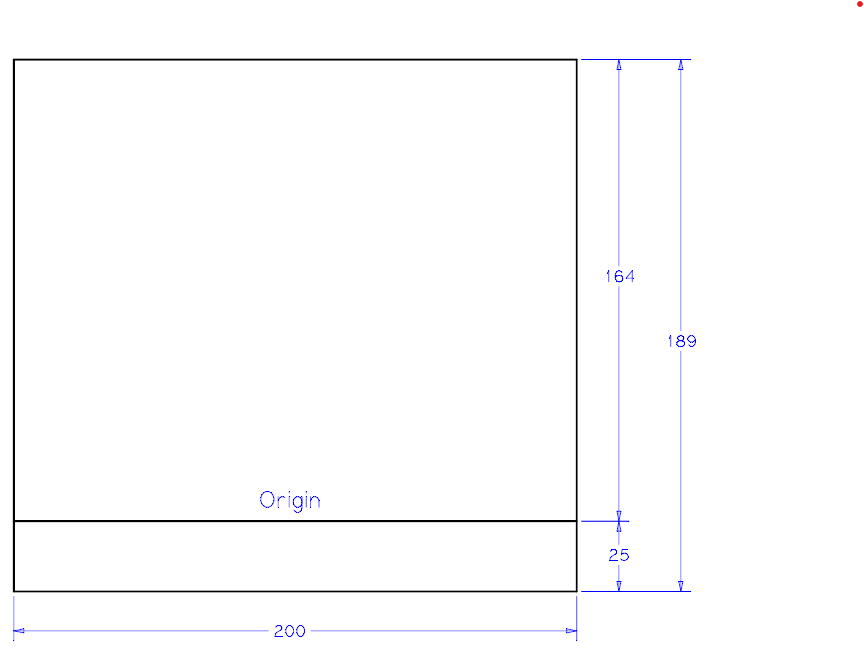
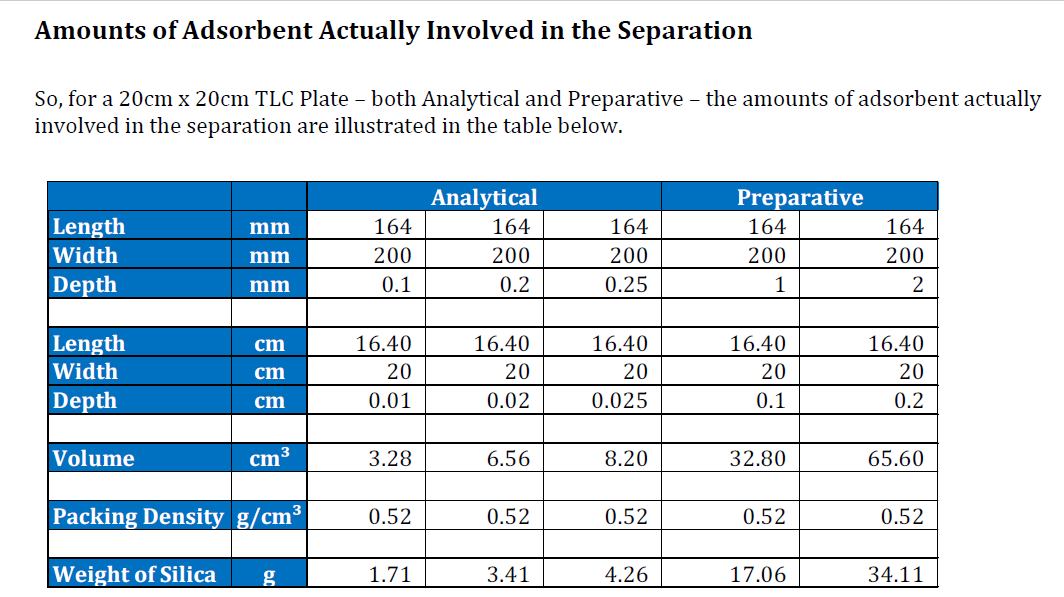
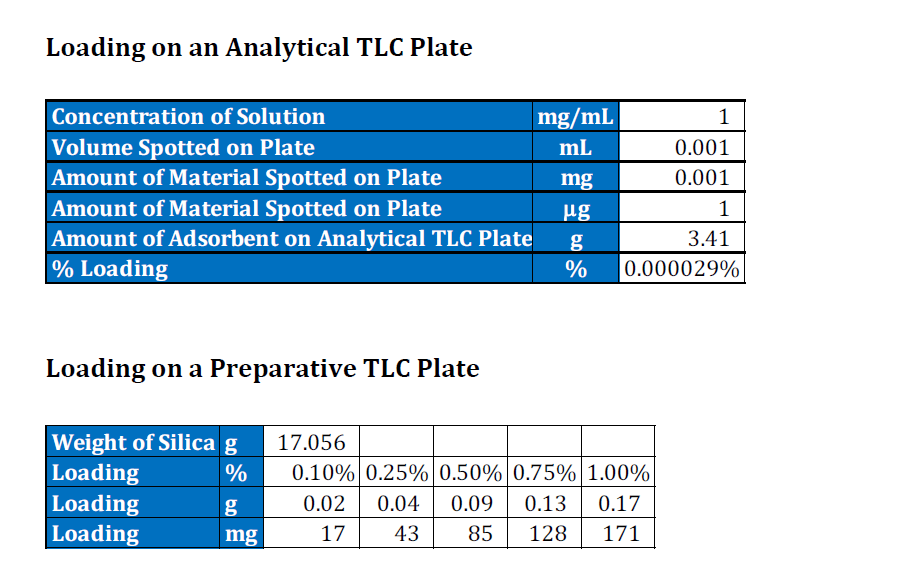
Mass Overload Point (MOP)
As loading increases, the separation efficiency – or plate number – begins to diminish. When the Mass Overload Point is reached, the separation efficiency diminishes very rapidly.
Analytical work is always performed in linear range whereas Preparative work is performed with as high a loading as possible to achieve the goal of purifying the substance of interest. This is illustrated in the figure below.
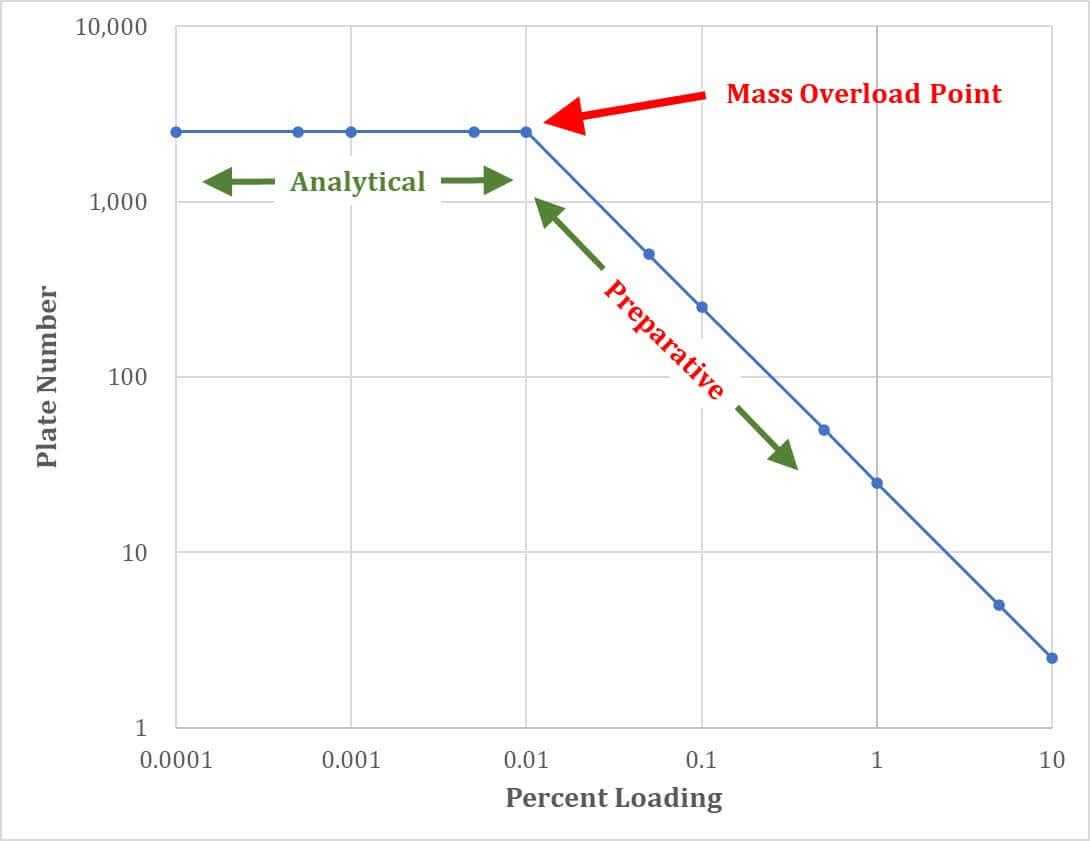
Effect of Overloading
At a certain point, the system will become so overloaded that the goal of purifying the substance of interest cannot be achieved.
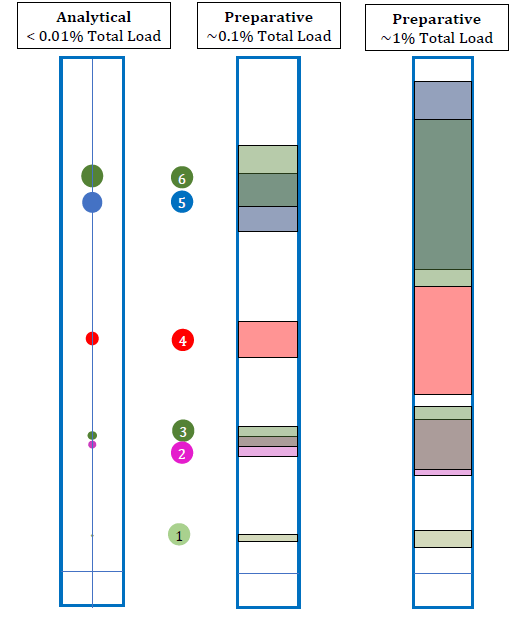
Minimum ΔRF for Adequate Resolution?
It can be seen from looking at the preceding pictorial representation and the following table, that the minimum ΔRf to achieve a successful separation on Preparative TLC Plates is about 0.1.
